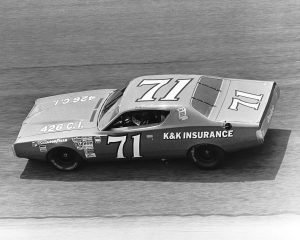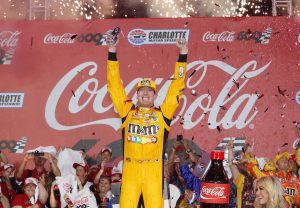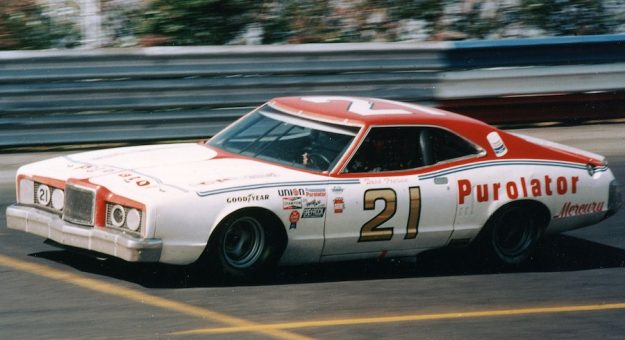Bruton Smith breathed a sigh of relief on June 19, 1960, when he and business partner Curtis Turner saw the first checkered flag wave over Charlotte Motor Speedway.
The entrepreneur and the racing legend accumulated tremendous debt while building their 1.5-mile quad-oval track, located northeast of Charlotte, N.C., on U.S. Highway 29, and they needed a huge crowd for the inaugural race in order to fend off the creditors.
Their answer was daring and unprecedented; host a 600-mile event for NASCAR’s premier stock car series.
The Indianapolis 500, the Daytona 500 and the Southern 500 were the marquee motorsports events of the day. Running an additional 100 miles seemed impossible, but the inaugural World 100 generated tremendous attention despite being pushed back from Memorial Day weekend due to construction delays.

Smith and Turner saw 35,462 fans enter the gates on opening day as curiosity about superspeedway racing was prevalent throughout North Carolina.
Rex White, the 1960 NASCAR champion, finished seventh in the race that is now known as the Coca-Cola 600. The ambient temperature that day reached 89 degrees and it was even hotter inside the race cars. The race took 5 hours and 34 minutes to complete and every driver in the 60-car field felt the effects.
“It was very hot for sure,” White recalled. “The asphalt was brand new and they barely had it finished before race time. It was coming up all over the place and creating potholes. I finished seventh (behind race winner Joe Lee Johnson) but I was a bunch of laps behind (22 laps down). I was running at the end, but everyone was popping tires and overheating engines. It was a really long day and a long race.”
The 600-mile race became a crown jewel of the NASCAR schedule. Throughout the 1960s, Nelson Stacy, Fred Lorenzen, Marvin Panch, Jim Paschal and Buddy Baker dominated the win column in the 600. The winners of the 1970s were Donnie Allison, Bobby Allison, Baker, David Pearson, Richard Petty and Darrell Waltrip.
The Chevrolets, Dodges, Fords, Mercurys and Plymouths of the era were rather primitive compared to today’s race cars, and they offered little relief in the way of driver comfort.
“David (Pearson) sat in two van seats with a side brace the entire seven years that he drove for us,” said Len Wood, co-owner of Wood Brothers Racing. “As far as something to help him for a hot day, it would have been a water jug that we bought at a department store with a plastic tube that he could get water out of. That was it. We could also hand him a cup of water through the driver’s side window during pit stops with a pole and a cup holder on the end of it.

“Side windows were in race cars until about March 1970. Then they (NASCAR) pulled the windows out in an effort to slow the cars,” Wood continued. “If you go back and look at photos of Cale Yarborough and David Pearson in victory lane, David was a cooler, calmer driver where Cale moved around in the car more and at times had to take oxygen. Both got the same result.
“They both won a lot of races. They were of equal talent. They were both great drivers. Cale would ride around in the summertime with the heat on high and windows rolled up in his personal car to help get used to the heat in the race car.”
Pearson’s first of 105 NASCAR Cup Series victories came in the 1961 600 and he added 600-mile triumphs with Wood Brothers Racing in 1974 and ’76. Yarborough did not win the 600 during his 31-year career, but he did win three 500-mile races at Charlotte Motor Speedway.
By the mid-1970s, cool suits were developed to pump cool water through a head-and-chest apparatus. However, the suits often malfunctioned and pumped hot water instead, making the driver even more miserable.
Ice packs were also used inside driver suits and, occasionally, drivers were doused with cold water, but those efforts provided only temporary relief and left the driver soaking wet. Relief drivers were often called upon during the 600-mile grind.
Bill Elliott, the 1988 Cup Series champion and winner of 44 series races, remembers a strategy based around making it to the end of the race.
